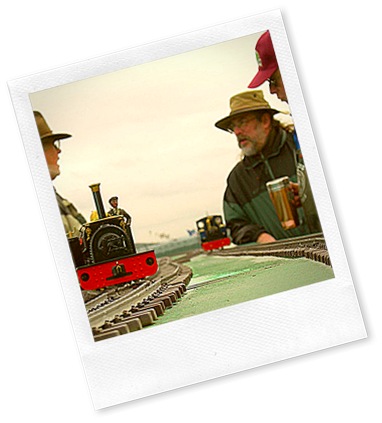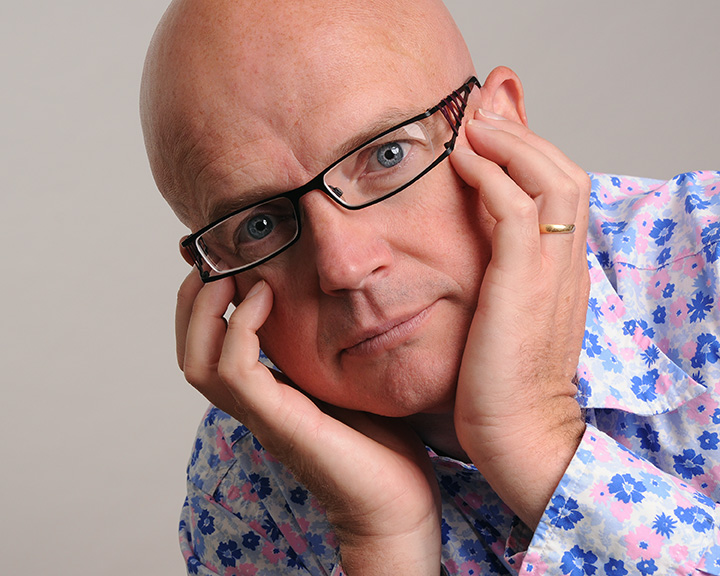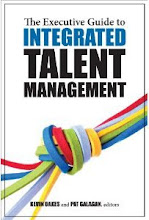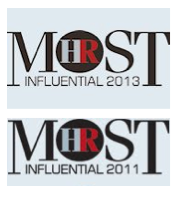 Did you get through yesterday’s rather monster ‘HR in the Social Business’ carnival? Well, apologies, but I think this is going to be an even longer post… (it’s well worth reading though!)
Did you get through yesterday’s rather monster ‘HR in the Social Business’ carnival? Well, apologies, but I think this is going to be an even longer post… (it’s well worth reading though!)
I recently attended a great event, ‘Delivering Outstanding Performance’, organised by Michelle Lawton from Consult HR and ‘MOK’ from The Innovation Beehive.
Opening the event, MOK suggested that to contribute to their employers’ success, people need to be clear about what they want to be, who they are, and how that fits with their organisation.
We then had a presentation from Derrick Ahlfeldt, SVP HRM at Visa Europe with a case study from his organisation that demonstrated these points. In fact, Derrick’s story provided a great demonstration of much of what I’ve been blogging about here over the last couple of years too.
So I’ve gone a bit to town in describing Derrick’s presentation – and have also provided some notes / links to previous thoughts that support and occasionally challenge some of this case study:
| Visa Europe story | My perspectives (NOT Derrick’s necessarily!) |
| As an association, Visa Europe is about developing the whole market (the European credit card business) through collaboration. By 2004, following a major restructuring and re-engineering, people had initiative fatigue. There was a need to re-engage people and gain additional discretionary contribution. Since then, the company has been working to become a ‘Peak Performing Organisation’. | Derrick didn’t present it like this, but I’d suggest that collaboration is Visa Europe’s mojo. External collaboration is clearly critical to the company’s success and I think they understand (implicitly at least) that because of this, internal collaboration is equally as important. |
| A major part of this shift has been creating an environment in which people are put at the centre of the organisation – an environment in which people don’t feel they are ‘being done to’, but are ‘doing it for themselves’ – ‘making ownership and accountability personal’. | Visa Europe has clearly been ‘putting human capital first’ – treating people as providers of critical human capital rather than simply (human) resources (my Strategic HCM blog is all about putting people and human capital first). This is absolutely appropriate for an organisation whose mojo is about collaboration as people will need to take accountability in order to trust each other in order to support collaboration (the other way of saying this is that building human capital is a pre-requisite for effective development of social capital… - see below). |
| Kevin Roberts, CEO of Saachi and Saachi, suggests that a ‘Peak Performing Organisation’ has a ‘sense of family’ within the team. This has been another part of Visa Europe’s recent shift. | Visa Europe has also been developing social capital around a sense of family. Again, this is absolutely appropriate for an organisation whose mojo is about collaboration (my Social Advantage blog is all about developing the right social capital to support an organisation’s mojo). |
| This shift has been supported by documenting: · An inspirational dream (“to be the world’s most trusted company”) · Shared spirit (“what makes Visa Europe different to other organisations?” eg competitive yet collaborative, trusted, multi-cultural family) · A common set of beliefs (eg empowering and investing in the individual, nurturing the dynamics and diversity of the Visa family) · The “Greatest Imaginable Challenge” (an extraordinary stretch target which is unique to the organisation and inspiring to its people) · Focus It took over a year to “wordsmith” this document in order to ensure that everyone was comfortable with it. | I think this process demonstrates the need to develop a solid push behind whatever a company is trying to do (whether this is articulated through a BHAG, mojo or something else) as a way of translating this intent into organisational capability. I particularly like the way that Visa Europe’s shared spirit and common beliefs blend human and social capital (competitive yet collaborative, individual and family). I presume the “Greatest Imaginable Challenge” which Derrick didn’t want to discuss is Visa Europe’s BHAG. But note that this is developed from the mojo (an inside-out approach) rather than the other way around. I also think Derrick probably under-sold the work he and his team did to socialise this document – in my experience, the process of creating a joint ‘vision’ for the organisation is more important than the document it produces. It’s about creating a shared mindset, rather than a wordsmithed document! |
| The ‘Peak Performing Organisation’ programme
| My perspectives
|
| The programme currently consists of two phases: | |
| Phase 1 - Individual
Visa Europe has made participation in this phase of the ongoing programme voluntary in order to create a different dynamic from the past.
This phase consists of: · Plenary introduction sessions (in the first year of the programme, Visa Europe ran three events, each with 150 people, which was helpful in getting the programme started – they now run just four smaller sessions per year) · Three small group sessions (6-8 people) facilitated by an inspirational player (someone who has “been there and got the T-shirt”) · Development and communication of a personal values-story, identification of implications and creation of an action plan
The key questions that individuals consider in this values story are: · Given you are this person and these are your skills and talents, what can you bring to this organisation? · How does this link? (are you doing what you wanted to do when you grow up?) · Are you in the right job and the right organisation?
(A volunteer kindly described for us his story – including his ‘home me’ and his ‘CV me’ – explaining that once he had identified his talents from this story and discussed this with his group, his ‘CV me’ became the ‘real me’ – the distinction was removed:
| I think this phase of the programme provides a really nice (whoops – sorry MOK) explanation of a human capital vs a human resources approach. Ie the phase is about employees as individuals, not the business. However, there is a limit to this. Derrick was keen to stress that employee empowerment should not lead to organisational chaos – employees still need to do what the organisation needs them to:
(Or as MOK described it, it’s about “total freedom in a gilded cage”.) I’d suggest the next stage might be to open the door of the cage and see what happens…
The phase also starts to develop social capital too (via sharing values stories within the team). There are some really good examples (eg Herman Miller) where sharing this type of information has had a very powerful team boosting effect. |
|
Phase 2 – Team In this phase, a whole team is taken away to consider: · Alignment – the team purpose, customer dreams and nightmares:
· Values – realigning purpose based on customer input · Implications – barriers and challenges for action planning |
Another good approach – this time to develop social capital. But could it be even more strongly based upon the existing capabilities of the team (what the team can do rather than what customers currently need)? |
| The results | My perspectives
|
| People have generally been very positive about the change. However, disbelievers are tolerated as long as they do the job they are expected to do. And some people have left the organisation. | I think people are always going to leave organisations during a transformation like this. And if they’ve left with a better perspective of whom they are and where they should be, this can only be a good thing for them, and is probably a good thing for the organisation too. If they’ve left because they’ve found the whole thing a bit too ‘fluffy’ then I think that’s a shame for them. But I’m convinced that doing this sort of thing will gradually become part of everyone’s normal expectations. |
| Since 2004, · Survey completion rates have increased from 83% to 96% · Overall engagement has increased from 72 to 90% · External customer satisfaction has increased from 6.8 to 8.1
There are other positive statistics too, but what the Chief Executive says is also important are the stories and what he’s seeing in the organisation.
| The CEO’s focus on both quantitative and qualitative evidence is totally appropriate. Not everything that’s important can be measured, and I think this applies particularly to organisational capability, ie to both human and social capital. However, clearly when something important can be measured, it makes sense to measure it. And what’s behind Visa Europe’s success? I’ve discussed the role of mojo, organisational capability / human and social capital and making a solid investment behind this. The other two aspects that I believe are particularly important are: · Alignment – between each of these different concepts and Visa Europe’s programmes and practices · Best fit – the things that Visa Europe has been doing won’t apply for all organisations, but they apply for this organisation, with its focus on trust and collaboration, superbly well.
So the message isn’t do what Visa Europe’s done. It’s applying the same level of insight and sharpness to your own organisation. And if you do this, you should gain the same levels of Human and Social Advantage too. |
.
.
Phase 3?
We didn’t talk about this at all, but I’d suggest Visa Europe’s next step is towards even greater liberation of individual employees and of teams.
Derrick explained that as a result of the first two phases, Visa Europe is now confident that every person and every decision is linked with a golden thread to the organisation vision.
That’s great, but it still sounds rather too top-down?
I agree that they do need to manage performance against the organisation’s vision and objectives (top-down) but they would also benefit from taking ever greater advantage of the potential residing in each of the company’s employees – leading performance instead of just managing it (I’ll be talking about this in Greece next week) – ie bottom-up.
At the team-level, I’d suggest that Visa Europe continue to build social capital – perhaps by emphasising links across teams (bridging capital) as well as within the teams (bonding capital).
So I’d suggest they look at different opportunities that will help them do this – recognising that these may range from organisation development to social media; social events to reward practices; and social network analysis to facilities design.
Note - and I’ve emphasised this quite a few times - that the ‘social business’ (if this is what Visa Europe is) isn’t just about the use of social media.
So, for example, Michelle described a nice example from the BBC where people have been given the opportunity to go and experience different areas of the organisation for a few weeks (“the hot shoe shuffle”).
Note also that this isn’t in any way supposed to be criticism of Visa Europe’s story. They’ve done much more than most organisations would even dream of. I’m just explaining the direction I personally feel they should go.
Anyone else any suggestions for Derrick?
Thanks to MOK and Michelle for the invite to the event, and to Derrick and his IT colleague for the story.
Photo credit: Joe Mabel
This post is cross-posted at Social Advantage.
.





























0 comments:
Post a Comment
Please add your comment here (email me your comments if you have trouble and I will put them up for you)